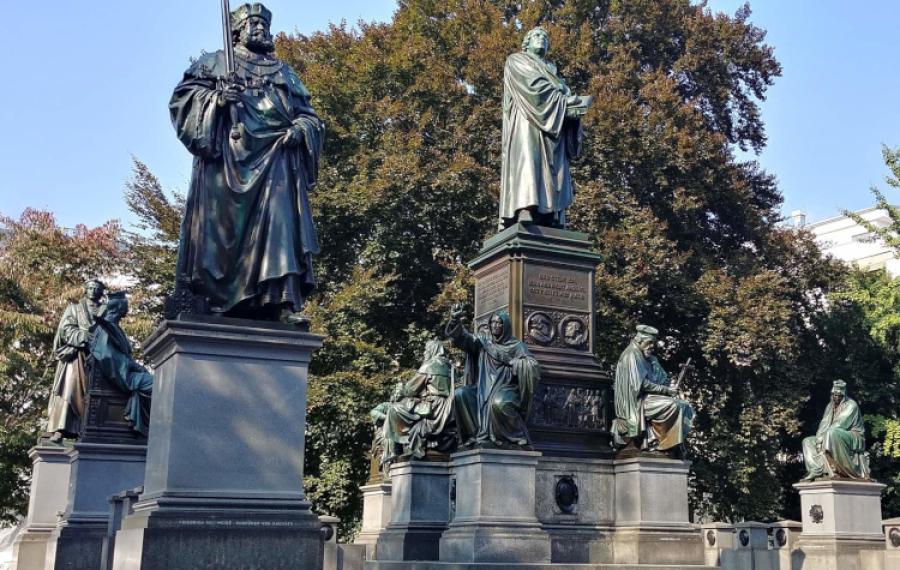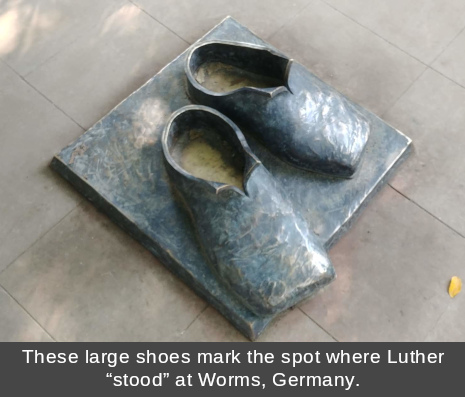The Reformation at 500: The Papal Bull (Part 1)
Image

In September of 2017, my wife Lynnette and I were privileged to visit the land of Germany and tour the sites of the Reformation in celebration of its 500th anniversary.
The trip was memorable—even life-changing—for a number of reasons.
First of all, the trip was given to us by our friends at Grace Bible Church, in Portage, Wis., where I had served as interim pastor for nearly two years. Suffice it to say that we will never forget all that that congregation did for us.
Secondly, the trip took place less than three months after my wife had brain surgery to remove a pituitary tumor. That period, in the late spring, summer and fall of 2017, was one that I would never want to redo—and yet I cannot imagine my life without it. It led directly into our determination to seek to serve in my position with The Friends of Israel Gospel Ministry.
Thirdly, this was our first experience with international travel. That, in itself, was extremely significant for us.
Finally, this trip took my interest in, and passion for, the Reformation, to an entirely different level. Although I have been fascinated with the Reformation all of my life (being raised a confessional Lutheran) and have preached on it for nearly 30 years, this trip opened my eyes to so many new realities, and brought it all to living color in my mind.
 This has also opened up many new opportunities for teaching on the subject, utilizing the more-than 800 photos that I took on the trip. And, it has also increased my desire to study the topic further.
This has also opened up many new opportunities for teaching on the subject, utilizing the more-than 800 photos that I took on the trip. And, it has also increased my desire to study the topic further.
The year of 2017 was certainly noteworthy to all who understand the centrality of the Reformation within church history. But it is also important to realize that the 500th anniversary of the Reformation is not yet over. In fact, even now, it is really only beginning—that is, if we understand the Reformation to include many different events that occurred over the course of many years. These various elements all combine to form one grand narrative regarding the refining of the church that began officially on Oct. 31, 1517.
This Monday, June 15, marks the 500th anniversary of the beginning of one of the most important and dramatic episodes in the history of the Reformation. What Pope Leo X began that day by using Psalm 74:22 (“Arise, O God, plead Your own cause”) as the premise of his papal bull, titled Exsurge Domine, culminated with Martin Luther’s most famous statement at the Diet of Worms the following April 18, when he said:
Unless I am convicted by Scripture and plain reason (I do not accept the authority of popes and councils because they have contradicted each other), my conscience is captive to the Word of God. I cannot and will not recant anything, for to go against conscience is neither right nor safe. Here I stand, I can do no other, so help me God. Amen.*
By going to Worms and taking his stand, Luther changed the history of Western Civilization for all time. Had fear, or even the cautions of his friends, kept him from going, he certainly would never have accomplished all that he ultimately did. Yet, surely many have heard these words without realizing their full context and significance.
On our trip, we visited Worms on our final day of touring. It was the second-to-last stop, followed only by a visit to the Gutenberg Museum in Mainz.
I was so looking forward to going to Worms, and my only regret is that we did not get to spend more time there. The building in which this diet of the Holy Roman Empire was held, and where Luther made his famous statement, is no longer standing. There are some historical markers—including a giant pair of shoes and a plaque, to commemorate Luther’s stand—in an otherwise unassuming park area.
Across the street, though, is the gigantic Luther Monument. Here in bronze is the medieval “Hall of Faith.” The lifelike figures of Peter Waldo, John Wycliffe, John Hus and others surround Luther (in the center, of course), while Philip Melanchthon looks on dutifully, Bible in hand. The great Elector Frederick the Wise is even standing guard with his sword held high. Together, this great company “still speaks” (Heb. 11:4)—albeit in German.
But how, specifically, did this incredible chain of events, which culminated at Worms, begin on June 15, 1520?
That will be our subject next time. We will start by tracing some of the events that preceded that day—including Luther’s appearances at Heidelberg, Augsburg and Leipzig in 1518 and 1519, at confrontations that escalated the tension between him and church officials.
And, Lord willing, we will continue to follow “The Reformation at 500” in future installments, as well.
Note
* The quotation of Luther at the Diet of Worms (with the debated ending included) is drawn from two separate paragraphs of “Here I stand, I can do no other, so help me God. Amen;” https://christianhistoryinstitute.org/blog/post/here-i-stand-i-can-do-no… Internet; accessed 11 June 2020.
Paul Scharf 2019 Bio
Paul J. Scharf (M.A., M.Div., Faith Baptist Theological Seminary) is a church ministries representative for The Friends of Israel Gospel Ministry, serving in the midwest. He also assists Whitcomb Ministries and writes for “Answers” Magazine and Regular Baptist Press. For more information on his ministry, visit foi.org/scharf or email pscharf@foi.org.
- 48 views

Discussion